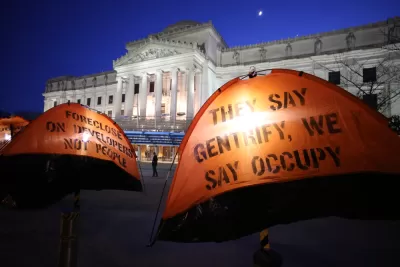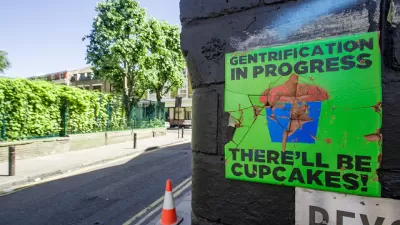Not all issues are as simple as people would like them to be, but that's especially true regarding gentrification. A recent Washington Post article is helpful for arming your arguments with evidence in the ongoing debate about gentrification.

"Gentrification is painted alternately as a destroyer of neighborhoods or a savior of cities," according to the premise set by an article by Lance Freeman. "These competing views are driven in part by misconceptions about what the word means and what it entails."
Freeman then sets out to debunk five of what he considers the most common myths about gentrification, all the while citing research and journalism that either perpetuates common misconceptions or proves them wrong.
So for instance, when Freeman tackles the myth of gentrification leading to lower crime, he calls out Mic and a New Orleans Time-Picayune article for spreading misleading information, and a pair of studies as a counter argument to that claim. Other myths included in the article include the displacement effects of gentrification, the opinions about gentrification among long-term residents, the demographic make-up of gentrifiers (i.e., "gentrifiers are white"), and the causes of gentrification.
FULL STORY: Five myths about gentrification

Planetizen Federal Action Tracker
A weekly monitor of how Trump’s orders and actions are impacting planners and planning in America.

Map: Where Senate Republicans Want to Sell Your Public Lands
For public land advocates, the Senate Republicans’ proposal to sell millions of acres of public land in the West is “the biggest fight of their careers.”

Restaurant Patios Were a Pandemic Win — Why Were They so Hard to Keep?
Social distancing requirements and changes in travel patterns prompted cities to pilot new uses for street and sidewalk space. Then it got complicated.

San Francisco Suspends Traffic Calming Amidst Record Deaths
Citing “a challenging fiscal landscape,” the city will cease the program on the heels of 42 traffic deaths, including 24 pedestrians.

California Homeless Arrests, Citations Spike After Ruling
An investigation reveals that anti-homeless actions increased up to 500% after Grants Pass v. Johnson — even in cities claiming no policy change.

Albuquerque Route 66 Motels Become Affordable Housing
A $4 million city fund is incentivizing developers to breathe new life into derelict midcentury motels.
Urban Design for Planners 1: Software Tools
This six-course series explores essential urban design concepts using open source software and equips planners with the tools they need to participate fully in the urban design process.
Planning for Universal Design
Learn the tools for implementing Universal Design in planning regulations.
Heyer Gruel & Associates PA
JM Goldson LLC
Custer County Colorado
City of Camden Redevelopment Agency
City of Astoria
Transportation Research & Education Center (TREC) at Portland State University
Camden Redevelopment Agency
City of Claremont
Municipality of Princeton (NJ)





























